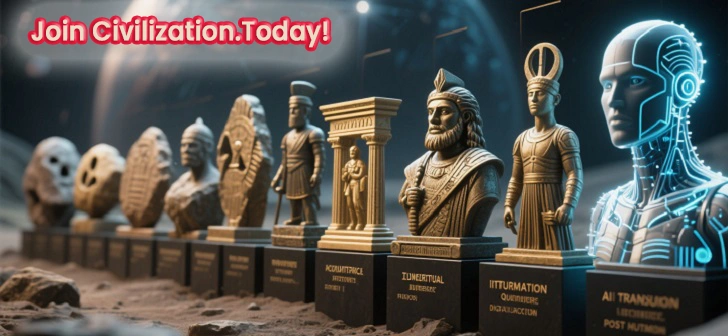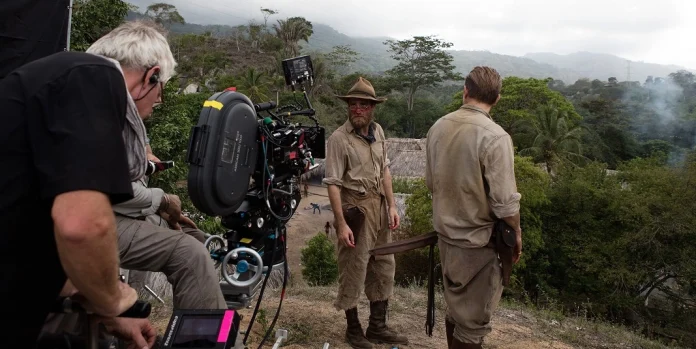From the dusty ruins of ancient temples to the bustling streets of cities that time has long forgotten, filmmakers have the remarkable ability to resurrect entire worlds that no longer exist. These cinematic recreations, known as Lost Civilizations Films, transport audiences into the past, allowing them to witness history’s mysteries unfold in breathtaking detail. But what goes on behind the scenes to make these worlds so real? The answer is a fascinating blend of art, science, and storytelling.
The Allure of Lost Civilizations Films
For centuries, humanity has been captivated by tales of vanished empires—Atlantis, the Maya, the Indus Valley, Mesopotamia, and beyond. Today, filmmakers channel this fascination into immersive visual experiences. Lost Civilizations Films don’t just entertain; they educate, provoke curiosity, and sometimes even spark new archaeological discoveries.
These films bridge the gap between history and imagination, showing audiences what life might have been like thousands of years ago—whether rooted in documented fact or inspired by myth.
Research: Breathing Life into the Past
Before the cameras start rolling, filmmakers dive deep into historical and archaeological research. This often means working with historians, anthropologists, and even linguists to accurately represent clothing, architecture, and cultural practices.
Take Ridley Scott’s Gladiator or Mel Gibson’s Apocalypto—though dramatized for cinematic effect, each was grounded in intensive historical consultation. Production teams study ancient scripts, museum artifacts, and excavation reports to reconstruct a believable past. In some cases, lost dialects are revived for authenticity, adding an extra layer of immersion.
Cinematic Technology as a Time Machine
Modern filmmaking technology has made it possible to recreate lost worlds with stunning realism. CGI (computer-generated imagery) allows for detailed reconstructions of cities, temples, and landscapes that no longer exist. Drones provide sweeping aerial shots that give viewers a god’s-eye view of these civilizations.
High-definition cameras capture intricate costume embroidery, while advanced lighting techniques mimic the natural sunlight of different regions and eras. The result? Viewers feel as though they are walking through ancient streets, touching the stones, and breathing the air of centuries past.
Casting and Character Development
Lost Civilizations Films are more than historical reconstructions—they’re human stories. Casting the right actors is essential to making these worlds believable. A skilled actor can convey the weight of tradition, the complexity of politics, and the emotional struggles of a time and place far removed from our own.
Some productions even hire extras from local communities with ties to the depicted culture, adding a layer of authenticity that can’t be faked. This approach not only deepens the storytelling but also fosters cultural representation and respect.
Balancing Accuracy and Entertainment
One of the biggest challenges in creating Lost Civilizations Films is finding the sweet spot between historical accuracy and compelling storytelling. While historians may insist on strict adherence to facts, filmmakers must craft narratives that engage audiences.
This sometimes means compressing timelines, creating composite characters, or inventing dialogue where none exists in the historical record. The best productions strike a balance—staying true to the spirit of the past while keeping the audience invested in the plot.
On-Location Filming: The Magic of Real Places
While CGI is powerful, nothing compares to filming on location. Shooting in deserts, jungles, or ancient ruins infuses a film with a tangible sense of place. Many filmmakers seek permission to shoot in UNESCO World Heritage sites, carefully navigating preservation laws to protect fragile locations.
Films like The Mummy and Indiana Jones took full advantage of real-world landscapes, blending them with studio sets to create a seamless visual tapestry.
Soundscapes and Music: The Forgotten Dimension
Visuals may bring the world to life, but sound gives it soul. From the distant rumble of ceremonial drums to the chatter of market stalls, sound design in Lost Civilizations Films is meticulously crafted.
Composers often use period-appropriate instruments—or modern recreations—to produce scores that echo the cultural identity of the lost civilization. Layered with ambient sound effects, this auditory world immerses viewers even further.
Why We Keep Returning to the Past
At their core, Lost Civilizations Films speak to a universal human desire: to understand where we come from. These films remind us that every civilization—no matter how mighty—eventually becomes part of the earth’s memory.
By resurrecting these worlds on screen, filmmakers give us a glimpse into the fragility of human achievement and the enduring beauty of cultural legacy. It’s no wonder that audiences keep coming back for more.
The Future of Lost Civilizations Films
As technology evolves, so will our ability to visualize the past. Virtual reality and augmented reality experiences are already starting to blur the line between film and interactive history. Imagine stepping into a VR recreation of Machu Picchu or walking through the streets of Pompeii just before the eruption.
The next generation of Lost Civilizations Films may not just be something you watch—they may be worlds you enter.
Conclusion
Behind every Lost Civilizations Film lies a monumental effort—scholarly research, creative vision, technological innovation, and a deep respect for the cultures portrayed. These cinematic journeys offer more than just visual spectacle; they invite us to ponder humanity’s shared past and the stories still buried beneath our feet.
In the hands of skilled filmmakers, the past isn’t gone—it’s waiting to be rediscovered.



